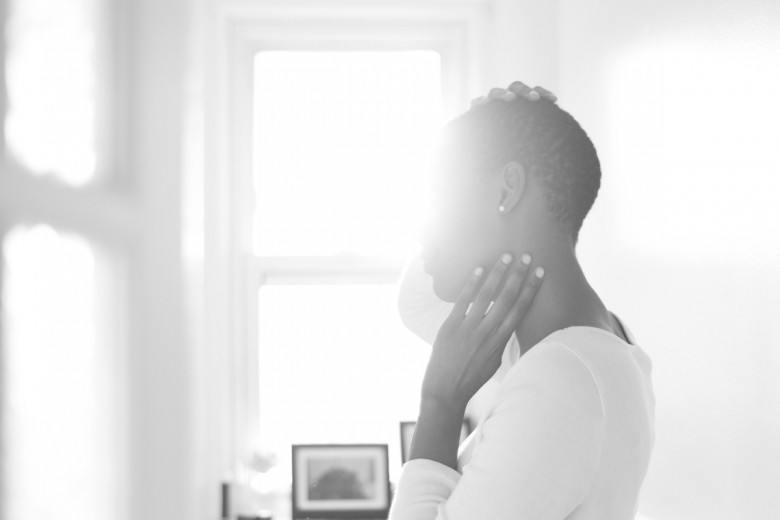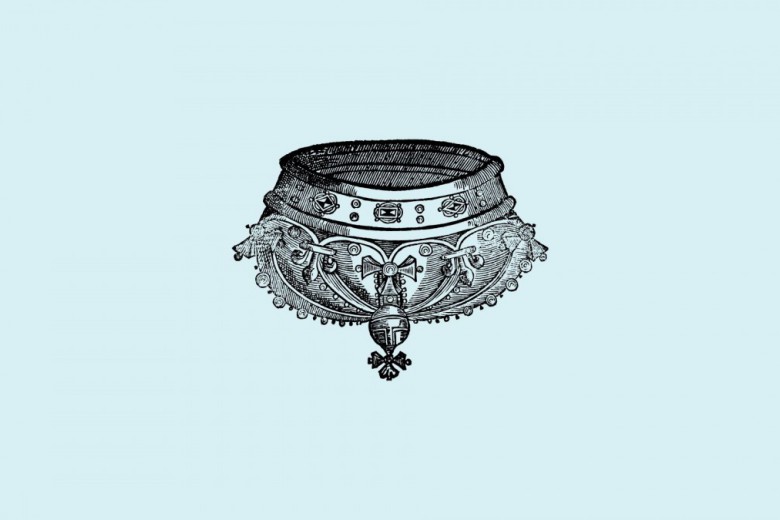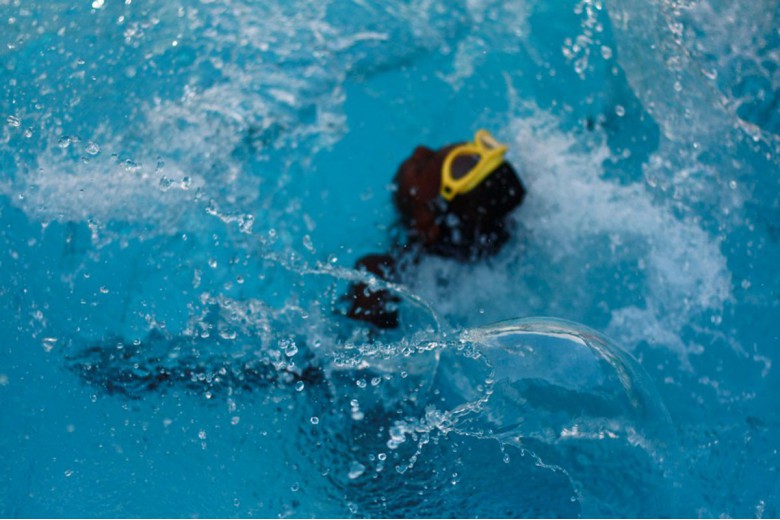History isn’t only recorded in libraries and national conservatories – people too can be the archive. Inspired by the Black tradition of oral history and storytelling, I met up with decades-long activist Adrienne Coddett in her classroom at Woodroffe High School in Ottawa to talk about the history of Black radical organizing in the national capital region, how she first got involved in movements for Black liberation, and lessons she’d like to pass on to organizers.
Sarah Tell us about yourself and your family.
Adrienne I was born in Ottawa to parents from Guyana. My parents were part of a group of foundational Black families in the city, and the kids all grew up together; we were “weekend West Indians.” They knew all of the Black people in the city because they intentionally built deep community networks and models that are now legacies. My parents had one of the first five Black-owned businesses in the city, Nu Skin Hair Fashions, a full-service hair salon. In my late teens and early 20s, I worked at the hair salon.
I’m not unique or special – I’m part of a long line of radicals. This is a family business. My great grandfather, Jonas Honeywell Dyer, and his brother, Warrick, on my father’s side were two of the first four Black men to integrate Queen’s College, Guyana’s best school. My father was in the same class as Walter Rodney, a Guyanese historian, political activist, and academic who was assassinated at the age of 38. He tirelessly documented the devastating effects of enslavement and colonial imperialism in Africa and the Caribbean, like in his internationally acclaimed book How Europe Underdeveloped Africa. The school did not accept Black people until my father’s family integrated that school.
My advice to Black organizers is: the way you make it through this world will be as a collective.
The school that my mother went to as a child was part of early Caribbean radical movements. It was funded by Black-led social organizations that would later become the Universal Negro Improvement Association and the NAACP [National Association for the Advancement of Colored People], but at the time they hadn’t yet found a name for it.
Sarah Wow, your parents belong to that generation of Caribbean people, who arrived in Canada in the late 1900s, the generation with a radical Caribbean consciousness inspired by abolitionist resistance to enslavement, marronage, and anti-imperialist struggles against the British Crown.
Adrienne Exactly. You know, we those kids [laughs]. I grew up seeing my parents organize; they were good troublemakers. They came from Montreal, and most of their friend group had either been charged in the Sir George Williams case or were part of the groups of students generationally who had fought racism prior to and beyond that Sir George Williams moment. It was normal for me and my siblings that Uncle Rosie [Douglas] would be sitting at down with us at the dinner table.
Sarah That organizing by Afro-Caribbean student activists was a large part of the rise of the Black Power movement in Canada. Accusations of academic racism turned into the first major Black-led student protests, all thanks to the Caribbean migrants, particularly students, who came to Canada with a radical consciousness. In 1968, six students filed a complaint against their biology professor for repeatedly giving Black students lower grades. Sir George Williams University (now Concordia) dismissed the complaint, but a movement culminated in what is now called the Sir George Williams affair. Students organized a sit-in on campus in 1969 in protest. In response, the university called the riot police, who arrested 97 people, and politicians called for students to be punished and even deported. Concordia only apologized in 2022.
Adrienne Yes, after the Sir George Williams riot, most of the student organizers went on to become prominent leaders. Rosie Douglas went back to Dominica and eventually became the prime minister.
Sarah Wow, and this is just one example of resistance to anti-Black racism in Canada that lays the groundwork for the work you are still doing. How did you get involved in political organizing?
Adrienne I studied education at Howard University in the late 1980s, a period where we had lots of resistance at the university. I remember when [students] Ras Baraka and April Silver initiated a protest against the school because the administration named Lee Atwater, the chairman of the Republican National Committee and a proponent of dog-whistle campaign tactics to Howard’s board of trustees. It was offensive – how could you have him on the board at a historically Black college? We protested. We were on strike for two weeks – and won – and I fell in love with agitation.
In 1998, I began working as an educator. Being the only Black person on staff was … something. My first day coming into this building [Woodroffe High School], I passed Minnijean Brown-Trickey near the teacher parking lot and she looked at me and said, “It ain’t gonna be easy, but you’re the one. You got it.” She was one of the nine Black teenagers – known as the Little Rock Nine – who integrated Little Rock Central High School in Arkansas after the Brown v. Board of Education decision required public schools in the United States to desegregate. Coming from her, it was empowering and so I came in here and I did what I needed to do, thought I could do, and had the power to do no matter how hard it was.
I will always work for the community. I’ll always be rooting for all Black people to win.
Sarah What was it that you wanted to do?
Adrienne Everything I do is for my students. I coached track and basketball, and that starts my duality of teaching while also being a woman who coached boys’ basketball at the same time for like 25 years in school. I started a community basketball program, the Ottawa Phoenix, with Andy Waterman. I was involved in co-founding the community organization 3Dreads and a Baldhead with Jacqueline Lawrence, Michelle Simms, and Shawn Simms. I helped create the Dr. Michelle Walker scholarship for Black students. I still plan events to celebrate students, including the annual Walk with Excellence.
I help organize multiple hip hop festivals. I got involved in the hip hop scene because hip hop lets you be loud about your Blackness. I went to a high school that had a majority Black student population. At the time, hip hop was on the edge; it was something society told you not to do or organize around, it came with a view that hip hop was related to criminality.
It’s for us, by us, and it’s spread so far around the world that other marginalized communities use it as their tool to speak. I look hip hop and I invest in this look, and it’s my response to a world that once told me I would not be able to wear sneakers for my whole life. I love hip hop and I’ve been vindicated. Black people should be allowed to have emotions.
I was involved in starting a community organization, a Saturday program called ACCESS (African Canadian Educational Services). We had one of those moments, police shooting a Black man, Vincent Gardner, who was holding the “deadly weapon” of a guitar. We organized a vigil downtown, refused to speak to reporters. Why talk to media that only covers Black people when we are dead? We’re not signing up for our own oppression; I feel exactly the same way about that today. We stayed agitating and travelled to other communities as well. For example, we travelled to protest the Royal Ontario Museum’s “Into the Heart of Africa” exhibit.
I’m not unique or special – I’m part of a long line of radicals. This is a family business.
I retired in 2015 from coaching and I only have two more years of teaching. But my commitment to this kind of school with a large Black student population, this kind of teaching that centres the Black experience and this kind of space as a Black educator mean something to the community and me.
There’s only one other thing I have done longer than teach, and that’s radio. As a host of Black on Black, I sit at a hub of community innovation, amplifying what Black communities do and create. [It’s] a platform for community dialogue not found anywhere in the mainstream, [providing] community access and community visibility.
I will always work for the community. I’ll always be rooting for all Black people to win. And I will always use whatever influence and capacity [I have] to ensure that Black people get what they need, whether it’s local, nationally, or internationally.
Sarah What lessons do you have for African, Caribbean, and Black organizers?
Adrienne My advice to Black organizers is: the way you make it through this world will be as a collective. I want us to honour and respect the multiplicities of who we are, learn from our past and refuse to reinvent the hierarchies that we know don’t work. The energy to do that work comes from us gathering in a space together.
Update, February 8, 2024: A previous version of this article stated that Adrienne Coddett's parents immigrated in the late 1800s, when they immigrated in the late 1900s. It also stated that Coddett began teaching in 1992 when she began teaching in 1998. This article has been updated.







